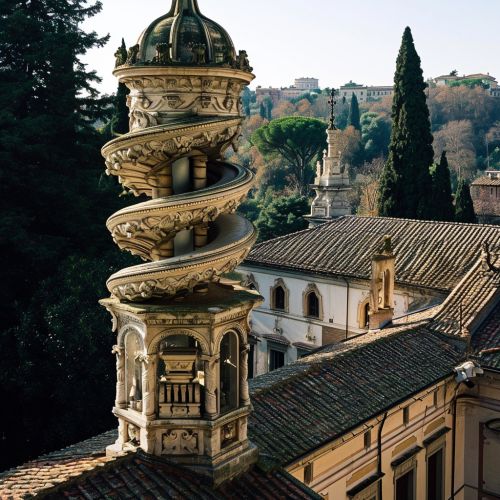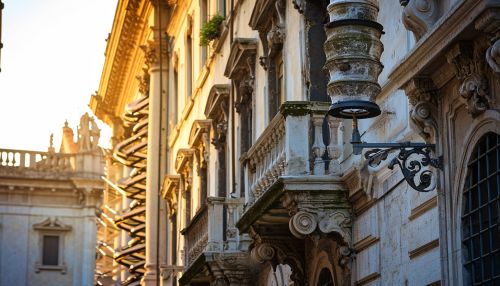Sant'Ivo alla Sapienza
Architecture
Sant'Ivo alla Sapienza is a masterpiece of Roman Baroque architecture. Designed by the architect Francesco Borromini, it was his first independent commission. The church is a part of the complex of the former University of Rome, La Sapienza, hence its name.


The church's design is innovative and complex, with a series of geometric shapes interlocking and intersecting. The plan of the church is a perfect example of Borromini's innovative approach to architecture. It is based on a six-pointed star, with each point leading to an apse. The central space is a complex interplay of convex and concave forms, creating a dynamic and dramatic interior.
The façade of the church is equally complex, with a series of concave and convex forms that create a sense of movement and dynamism. The façade is divided into two levels, with the lower level featuring a series of arched windows and the upper level dominated by the dramatic spiral lantern.
The spiral lantern is one of the most distinctive features of Sant'Ivo alla Sapienza. It is a complex geometric form, based on a series of intersecting circles and triangles. The lantern is topped by a small dome and a cross, adding to the vertical emphasis of the design.
Interior
The interior of Sant'Ivo alla Sapienza is a masterpiece of Baroque design. The central space is dominated by the dramatic spiral lantern, which allows light to flood into the church. The walls are decorated with a series of niches, each containing a statue. The niches are framed by a series of columns and pilasters, creating a rhythmical pattern that adds to the dynamism of the space.
The altar is located in the apse, which is decorated with a series of frescoes. The frescoes depict scenes from the life of St. Ivo, the patron saint of lawyers. The frescoes are the work of the artist Pietro da Cortona, who was one of the leading painters of the Roman Baroque.
The church also contains a series of chapels, each dedicated to a different saint. The chapels are decorated with a series of frescoes and stucco decorations, adding to the richness and complexity of the interior.
History
Sant'Ivo alla Sapienza was commissioned by Cardinal Francesco Barberini, the nephew of Pope Urban VIII. The church was built between 1642 and 1660, with the construction overseen by Borromini. The church was consecrated in 1660, and it has remained in use as a church ever since.
The church was built as part of the complex of the University of Rome, La Sapienza. The university was founded in the 14th century, and it is one of the oldest universities in the world. The church was intended to serve as the chapel for the university, and it is dedicated to St. Ivo, the patron saint of lawyers.
Over the centuries, the church has undergone a series of restorations and renovations. However, the original design of Borromini has been largely preserved, and the church remains a masterpiece of Roman Baroque architecture.
Significance
Sant'Ivo alla Sapienza is considered one of the masterpieces of Roman Baroque architecture. It is a testament to the genius of Francesco Borromini, and it is one of his most innovative and complex designs.
The church is significant for its innovative use of geometric forms and its dynamic and dramatic interior. It is also significant for its spiral lantern, which is one of the most distinctive features of Borromini's architecture.
The church is also significant for its historical association with the University of Rome, La Sapienza. It is a testament to the importance of the university in the history of Rome, and it is a symbol of the university's long-standing commitment to education and scholarship.
